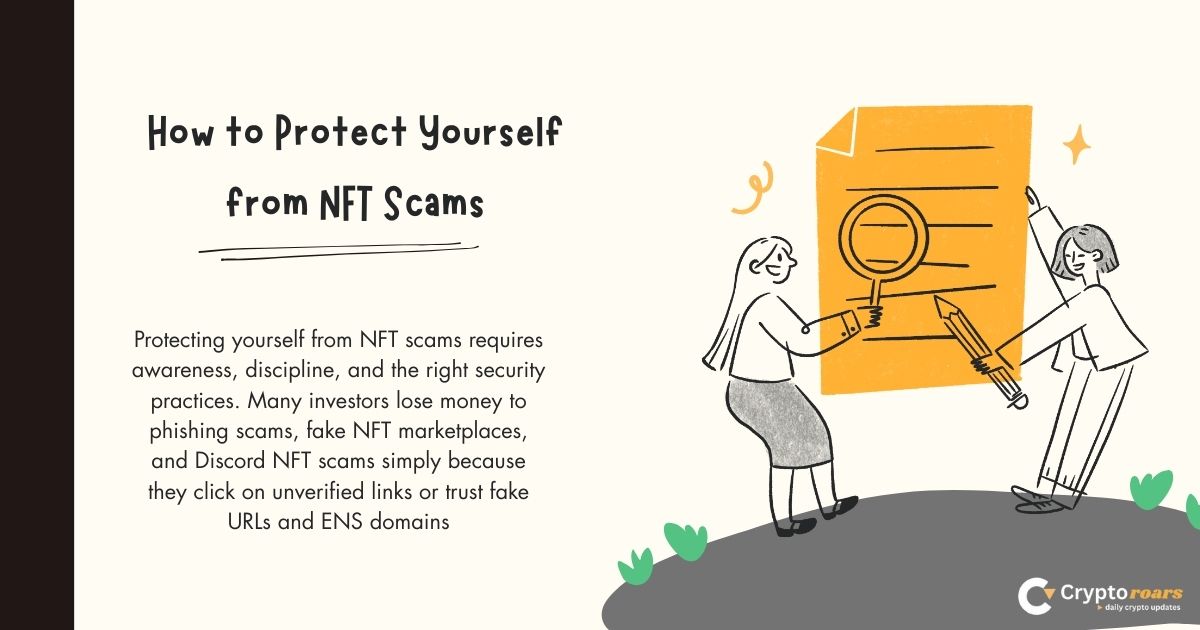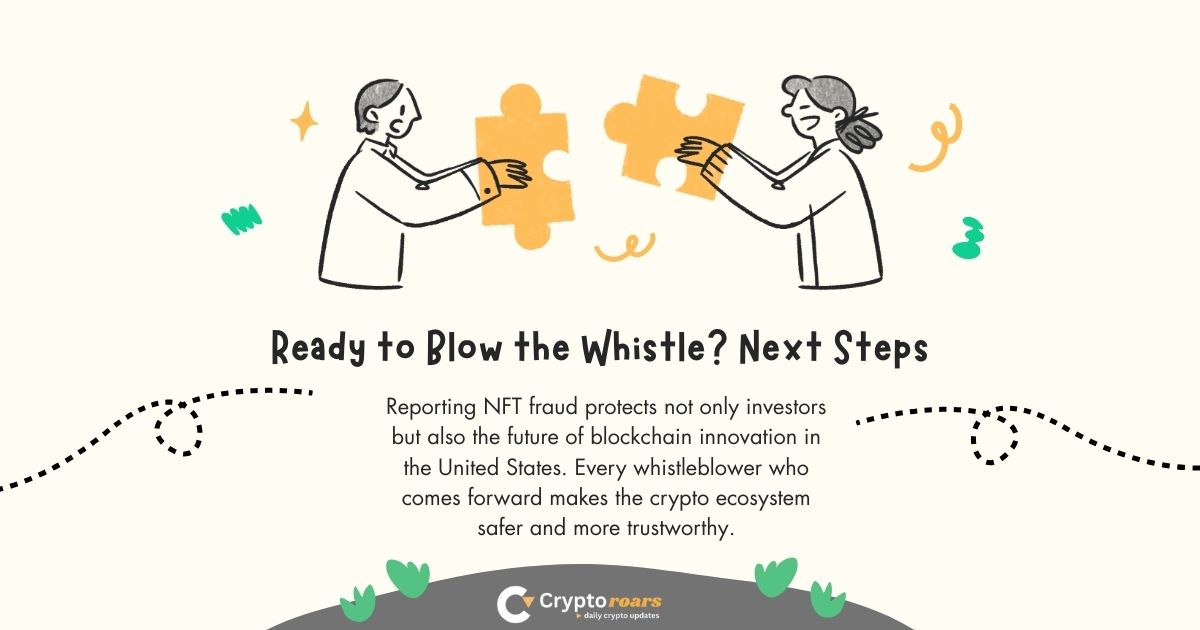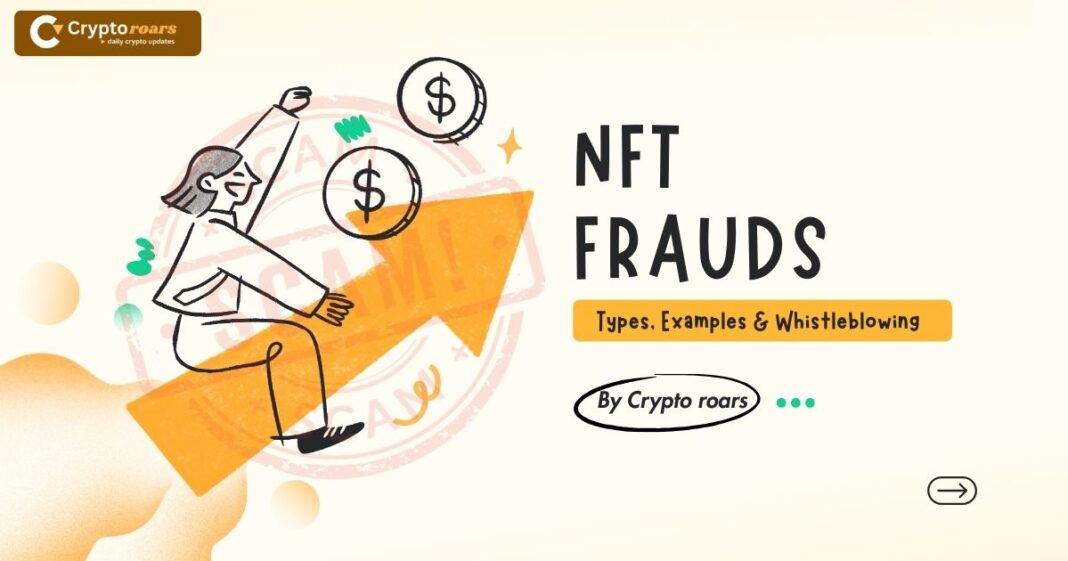The explosive growth of NFTs has created both opportunities and risks for investors worldwide, especially in the United States. What began as an innovative way to buy and sell digital collectibles has quickly become a billion-dollar market attracting artists, brands, and collectors. NFTs promise ownership on the blockchain, giving people access to rare items such as Bored Apes, NBA Top Shot moments, and countless other projects. However, along with this excitement comes a surge of NFT fraud that undermines trust in the market. From counterfeit NFTs to manipulative rug pulls, the landscape is full of risks that often catch unsuspecting investors off guard.
Understanding NFT fraud requires looking beyond surface-level hype and analyzing how criminals exploit weaknesses in blockchain systems and investor behavior. Fraudsters use fake websites, Discord hacks / DM scams, phishing scams, and deceptive promises to steal money and digital assets. Because blockchain transactions are irreversible, victims often lose everything with no recovery options. This makes awareness, vigilance, and strong security measures like seed phrase security and private keys protection absolutely critical. As the market continues to expand, learning how these frauds work and how to report them is the first step toward safer investing and holding fraudsters accountable.
What are NFTs?
NFTs, or non-fungible tokens, are digital assets stored on a blockchain. Unlike cryptocurrencies such as Bitcoin, each NFT is unique and cannot be exchanged one-to-one. That uniqueness made NFTs perfect for art, music, gaming, and collectibles. Platforms like OpenSea and Rarible brought NFTs to the mainstream, while projects like NBA Top Shot introduced millions of Americans to digital collectables fraud risks.
However, the same technology that makes NFTs powerful also creates room for blockchain fraud. Because transactions are based on irreversible transactions, once money or tokens are sent, they cannot be retrieved. Add pseudonymous blockchain developers and global platforms, and the result is a playground for crypto scams. This is why knowledge about NFT scams is critical for every investor.
Understanding NFT Frauds and Scams
The most common NFT fraud in the U.S. comes in several forms. Phishing scams trick people into clicking fake links that steal funds. Fake NFT projects launch quickly, raise millions, then vanish overnight in what are called rug pulls or exit scams. Criminals create fake NFT marketplaces to sell counterfeit NFTs, sometimes using fraudulent domain names or even fake Google ads (crypto) to lure buyers.
Many scams take place on platforms like Discord and Telegram. Discord NFT scams involve compromised Discord servers or Discord hacks / DM scams where attackers send links to malicious smart contracts. Victims believe they are minting a token, but in reality, their wallets get drained. These scams are often fueled by fake URLs and ENS domains, making it difficult for newcomers to tell real from fake.
NFTs as Securities
Some NFTs fall into the category of securities under U.S. law. The Howey Test, a legal standard, helps decide whether an NFT is an investment contract. If an NFT is marketed with promises of profit, backed by the work of others, it could qualify as a security. This makes it subject to strict regulation by the Securities and Exchange Commission (SEC).
When NFT scams involve these security-like tokens, they may not just be crypto scams—they can be securities fraud. U.S. investors need to be aware of this because violations can lead to SEC penalties, lawsuits, and bans from trading.
NFT Securities Violations
NFT securities violations happen when developers mislead buyers or sell NFTs without following federal securities laws. An example is when a project sells tokens promising future profits but hides the risks. The SEC has already warned U.S. companies about this issue.
| Case | Year | Violation | Penalty |
|---|---|---|---|
| Unnamed NFT Project | 2021 | Promised profits from resale | $10 million fine |
| Sports NFT Case | 2022 | Misleading marketing of NFTs | Cease & desist order |
Such cases show that the line between NFT scams and securities fraud is thin. Investors must understand these risks.
Impact of NFT Frauds on Investors and Market
The rise of NFT scams has deeply hurt investor confidence. Thousands of Americans have lost money to rug pulls, counterfeit NFTs, and phishing scams. The damage is not just financial. Many U.S. artists saw their work stolen and sold without permission in OpenSea plagiarized collections using the shared storefront contract (OpenSea).
The U.S. market for NFTs slowed in 2022–2023 largely because of these crypto ecosystem risks. While legitimate projects still thrive, trust has declined. This impacts both new collectors and major institutions considering NFT adoption.
Reporting NFT Frauds: SEC Whistleblower Program
The SEC created its whistleblower program to encourage insiders to report NFT fraud and crypto scams. By exposing fraud, whistleblowers protect investors and strengthen the U.S. financial system.
Those who report can receive awards, often between 10%–30% of the fines collected. They also get protections under U.S. law, which prevent retaliation from employers. Whistleblowers may file reports with anonymity, using an attorney to protect their identity. Evidence such as emails, smart contract code, or financial records is often key for building cases.
Notable Whistleblower Cases
The SEC has awarded millions to whistleblowers who helped expose fraud in the crypto scams space. In one case, insiders received a $30 million award for providing evidence that led to a major enforcement action. Another whistleblower earned $13.5 million for exposing violations involving fake NFT projects.
Other cases include confidential whistleblowers (2020–2021) who revealed blockchain fraud hidden behind tumblers/crypto mixers (obfuscating funds). The case of Andrés Olarte Peña is another example, showing how whistleblowers can also reveal environmental and human rights violations linked to NFT scams and digital collectables fraud.
Why Legal Assistance Matters in NFT Fraud Cases
Reporting NFT scams to the SEC is complex. Attorneys help whistleblowers prepare evidence, file reports, and stay protected. Without legal assistance, many cases may fail because of technical errors or missed deadlines.
U.S. law firms specializing in crypto scams understand how NFT minting scams, fake NFT projects, and malicious smart contracts operate. They also know how to work with regulators to ensure whistleblowers receive maximum rewards.
How Whistleblowers Help Protect Human Rights & Environment
While many people focus on financial losses, whistleblowers also expose fraud tied to wider harms. Some NFT fraud cases involve money laundering that funds illegal mining operations. These activities can damage the environment and violate human rights.
By coming forward, whistleblowers not only stop crypto scams but also prevent criminal networks from exploiting people and natural resources. This shows why reporting NFT scams matters beyond profits.
Latest News & Insights on NFT Fraud
In 2022, two whistleblowers shared a $6 million award for exposing fraud. Around the same time, a U.S. senator pressed Meta over fake customer support emails and the use of NDAs to silence whistleblowers.
The SEC has also shown flexibility, offering awards even when whistleblowers missed filing deadlines. In 2023, the SEC and CFTC announced new joint groups focused on tackling NFT fraud and other crypto scams. These steps show that the fight against blockchain fraud is active in the U.S.
How to Protect Yourself from NFT Scams

Protecting yourself from NFT scams requires awareness, discipline, and the right security practices. Many investors lose money to phishing scams, fake NFT marketplaces, and Discord NFT scams simply because they click on unverified links or trust fake URLs and ENS domains. The first layer of protection is education. Always verify the platform you are using by checking for NFT marketplace verification badges and looking up community discussions about the project. Be cautious of fake Google ads (crypto) that redirect you to fraudulent websites disguised as popular platforms. Make it a habit to check the authenticity of projects, since counterfeit NFTs and fake NFT projects continue to rise, often promoted by influencers or through compromised Discord servers. Keeping up with official announcements on social media verification (Twitter, LinkedIn) helps you distinguish legitimate updates from scams.
Another vital protection measure is strong wallet security. Always ensure seed phrase security and private keys protection, since once stolen, your assets are gone due to irreversible transactions on the blockchain. Use two-factor authentication on all accounts to reduce the risk of unauthorized access. Be wary of fake customer support emails that ask for sensitive details, as well as offers of help from random contacts on Telegram crypto scams channels or DMs. Do not interact with random NFTs in your wallet (malicious drops), as they may hide malicious smart contracts designed to drain your wallet. Use reliable wallet monitoring practices and stay informed about suspicious activity. Finally, check project roadmaps’ credibility before investing, and avoid projects run by fully pseudonymous blockchain developers with no history or accountability. Staying proactive, verifying every detail, and engaging with trusted crypto communities will protect you from falling victim to the most common crypto scams in the market.
| Common NFT Scams | How to Protect Yourself |
|---|---|
| Phishing scams through fake links or pop-ups | Always type URLs manually and check for fraudulent domain names or fake URLs and ENS domains before logging in |
| Fake NFT marketplaces with cloned websites | Use platforms with NFT marketplace verification and check verified accounts (NFT marketplaces) |
| Discord NFT scams and compromised Discord servers | Avoid clicking links from Discord hacks / DM scams; follow only official social media verification (Twitter, LinkedIn) accounts |
| Counterfeit NFTs and fake NFT projects | Check project roadmaps’ credibility, team transparency, and avoid projects with only pseudonymous blockchain developers |
| Random NFTs in wallet (malicious drops) | Do not interact with unknown NFTs; they may hide malicious smart contracts |
| Fake customer support emails and Telegram crypto scams | Never share seed phrase security or private keys protection; real support will never ask for them |
| Rug pulls and exit scams | Study the project’s crypto community vetting and history before investing |
| OpenSea plagiarized collections or scams using shared storefront contract (OpenSea) | Verify collection authenticity and use official links only |
Step-by-Step Guide to Safe NFT Investing
Investing in NFTs can be rewarding, but the risks of NFT scams, digital collectables fraud, and fake NFT projects are very real. A safe approach begins with building knowledge and developing a strategy. The first step is to research the project thoroughly. This includes checking the project roadmap, verifying whether the creators are public or just pseudonymous blockchain developers, and confirming their credibility through community engagement. A credible project usually has transparent plans, a strong crypto community vetting process, and partnerships that can be verified. Avoid projects with vague promises, unrealistic profit guarantees, or limited activity on trusted platforms. Reading about past scams, such as rug pulls or exit scams, will help you recognize patterns and avoid falling into the same traps.
The next step is securing your investments. Always prioritize seed phrase security and private key protection, as these are the keys to your assets. Use two-factor authentication on your wallets and trading accounts, and make sure you only buy from verified accounts (NFT marketplaces). Platforms like OpenSea have suffered issues such as OpenSea plagiarizing collections or scams through a shared storefront contract (OpenSea), so double-check verification badges and NFT marketplace verification before making purchases. Stay cautious of Discord hacks / DM scams, Telegram crypto scams, fake customer support emails, and fraudulent domain names pretending to be official sites. Also, pay attention to suspicious activities such as receiving random NFTs in a wallet (malicious drops), as they often link to malicious smart contracts designed to steal funds. Finally, practice good wallet monitoring practices and verify transactions before confirming, since irreversible transactions cannot be undone. With these steps, safe NFT investing becomes more structured, allowing you to explore opportunities without falling victim to crypto ecosystem risks.
AI in Finance and NFT Fraud Detection
Artificial Intelligence is transforming how we fight NFT Frauds and broader crypto scams. Traditional fraud detection methods rely on manual oversight, delayed reporting, and limited human analysis. However, the speed and complexity of blockchain transactions demand faster solutions. AI-driven systems analyze millions of wallet addresses, trading patterns, and market behaviors in real time, helping identify red flags like rug pulls, fake NFT marketplaces, or phishing scams. Unlike humans, AI doesn’t get fatigued, so it continuously monitors transactions to spot anomalies such as sudden price spikes, suspicious wallet clustering, or coordinated movements that often point toward malicious smart contracts or counterfeit NFTs. This proactive approach gives regulators, platforms, and investors an edge in staying ahead of fraudsters.
Beyond surveillance, AI also improves decision-making in finance by providing predictive analytics. Machine learning models can forecast potential risks by comparing new NFT projects with past cases of digital collectables fraud or fake NFT projects. For instance, if a project roadmap lacks credibility or the developers remain anonymous, AI tools can flag it before large sums are invested. Companies like Chainalysis and Elliptic already use AI for wallet monitoring practices to detect random NFTs in wa allet (malicious drops) or dust attacks. When combined with crypto community vetting, AI creates a layered defense system that reduces blockchain fraud risks while also supporting law enforcement in tracking stolen assets through tumblers/crypto mixers (obfuscating funds). This blend of automation, intelligence, and transparency positions AI as one of the strongest weapons against the rising tide of NFT scams.
Relevant FAQs on NFT Frauds and Whistleblowing
1. How do you buy NFTs safely?
Always use verified accounts (NFT marketplaces) and confirm the project’s authenticity through social media verification (Twitter, LinkedIn).
2. What is the SEC’s role in NFT regulation?
The SEC ensures NFT fraud is punished when tokens are sold as securities, protecting U.S. investors from crypto scams.
3. How can whistleblowers report fraud anonymously?
By using legal counsel, whistleblowers can file reports with anonymity under the SEC program.
4. What penalties exist for NFT fraud in the U.S.?
Penalties include multimillion-dollar fines, asset seizures, and bans from trading, depending on the severity of the blockchain fraud.
Ready to Blow the Whistle? Next Steps

If you know about NFT scams or crypto scams, the SEC offers secure ways to report them. Start by consulting an attorney to ensure seed phrase security and legal safety. Collect clear evidence like smart contract code, communications, or wallet transactions.
Reporting NFT fraud protects not only investors but also the future of blockchain innovation in the United States. Every whistleblower who comes forward makes the crypto ecosystem safer and more trustworthy.
For more information, keep visiting cryptoroars.com


